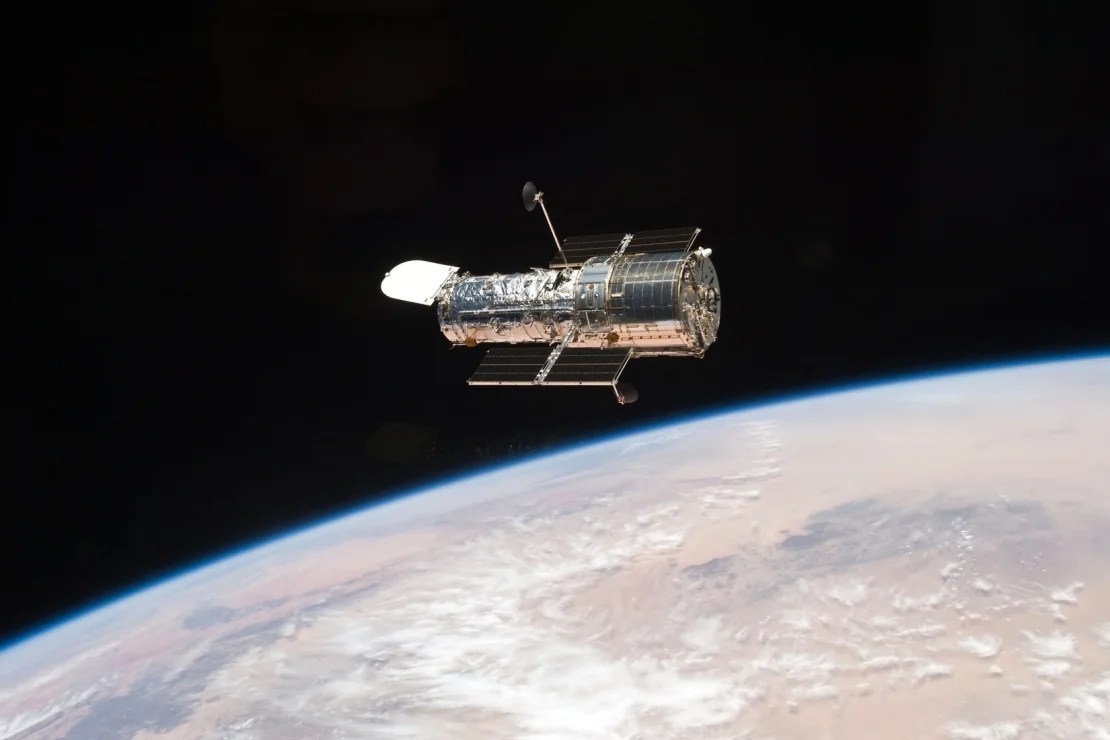(CNN) — According to NASA officials, the Hubble Space Telescope will transition to a new mode of operation that will prevent the space observatory from experiencing failures in its ability to observe the universe.
The historic telescope, which has captured stunning images of the universe for 34 years, is traditionally powered by six gyroscopes. The gyroscopes are part of a system that controls and determines the direction of the telescope, Mark Clampin, director of the Astrophysics Division within NASA's Science Operations Directorate, said during a press conference Tuesday.
As Hubble changes direction to capture images of exoplanets, galaxies and other celestial phenomena, gyroscopes measure the telescope's speed of movement so it can reach the right spot for the next science observation, Clampin said.
As the telescope aged, the gyroscopes had to be replaced, and six new gyroscopes were installed during the last Hubble servicing mission by astronauts on the NASA space shuttle conducted in 2009.

NASA's Hubble Space Telescope observed the universe in May 2009 after a shuttle mission servicing the space observatory. (Credit: NASA)
Over time, some of the gyroscopes stopped working, but three remained operational until now, without changing the telescope's functionality.
Inaccurate measurements plague Hubble
In the past six months, one of the three remaining gyroscopes has given false readings, causing the telescope to go into “safe mode” several times and halt observations of the universe, Clampin said.
The Hubble team was able to reset the gyroscope from Earth, but these fixes are temporary, and the problem appears frequently, said Patrick Kruse, Hubble Space Telescope program manager at NASA's Goddard Space Flight Center in Greenbelt, Maryland.
The telescope entered safe mode on May 24 after another malfunction with a problematic gyroscope, and remains intact, Kruse said.
After careful consideration, the Hubble team decided to operate Hubble using a single gyroscope, Klampin said, with the other working gyroscope kept in reserve for future use.
The team has long considered switching the telescope to gyroscope mode to extend its lifespan since developing the project 20 years ago.
“We believe this is our best approach to supporting Hubble science this decade and into the next, as most observations in space will not be affected by this transition,” Clampin said.
Hubble operated in two-gyro mode from 2005 to 2009, and in one-gyro mode for a short period in 2008, with no impact on the quality of scientific observations. According to the agency .
The future of Hubble observations
Change cannot come without limits, Cruz said.
A telescope will reduce its efficiency and flexibility by taking more time to move and position the objects it observes. It also can't track objects moving closer to Earth than Mars, but historically, Hubble has rarely observed such targets, Kruse said.
Now, the team will rebuild both the telescope and the ground system that transmits information to Hubble. The goal is to return Hubble to its regular observations by mid-June.
Previously, there was a feasibility study to assess how commercial partners could help raise Hubble into a higher orbit to give the telescope more operational time so that Earth's atmosphere is not dragged into a controlled re-entry in the 2030s, given the risks and requirements of such a move, but no “reboost” plans are moving forward at this time, Clampin said. .
Hubble is expected to operate until the mid-2030s, and its cosmic observations will provide a complement to the work of the James Webb Space Telescope and future observatories that have yet to be launched, Clampin said.
“We don't see Hubble on its last legs, and we think it's a very capable observatory,” Kruse said.




